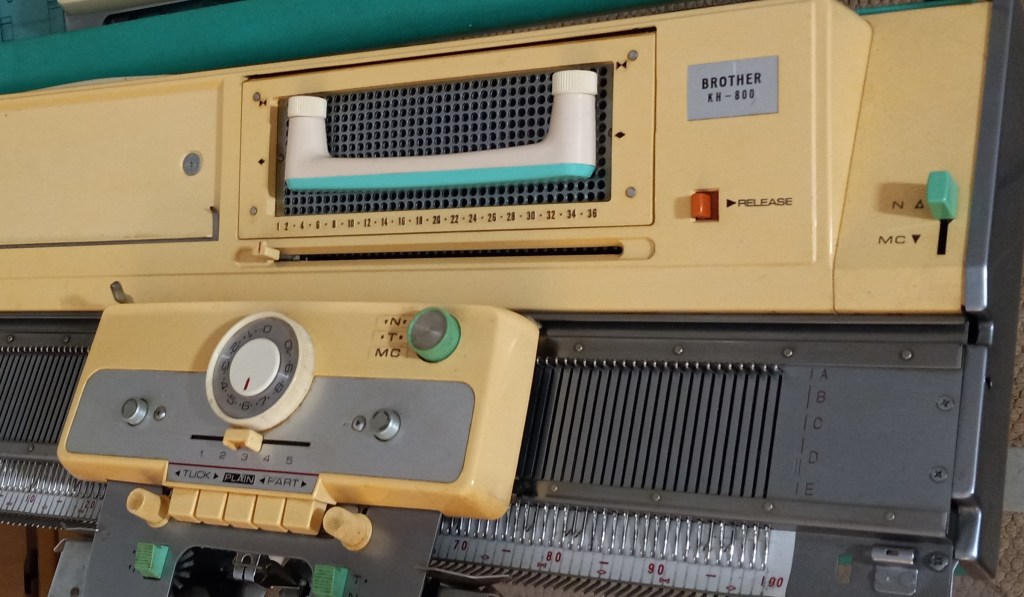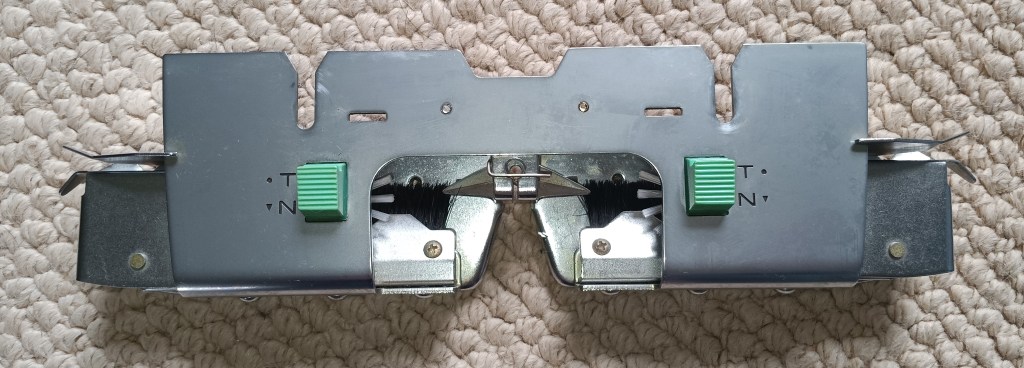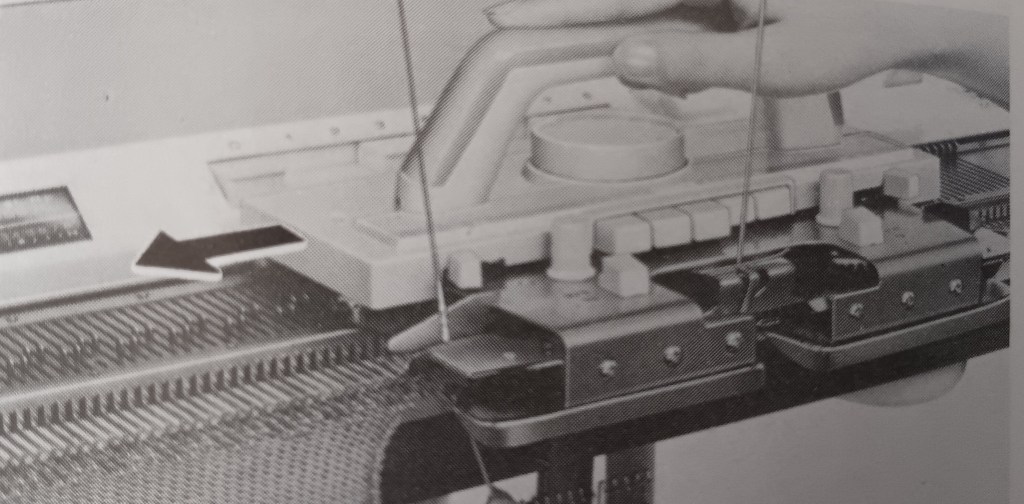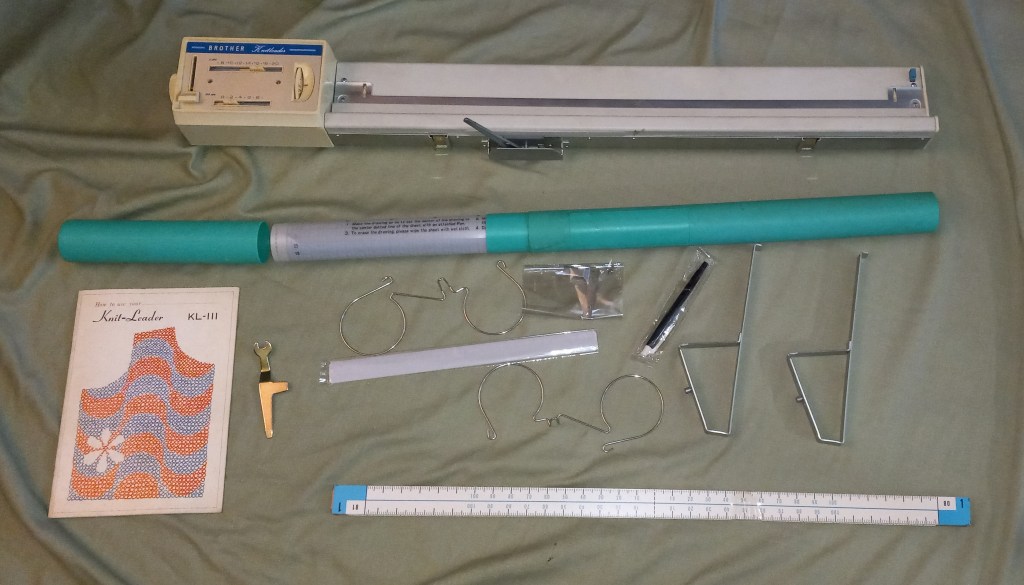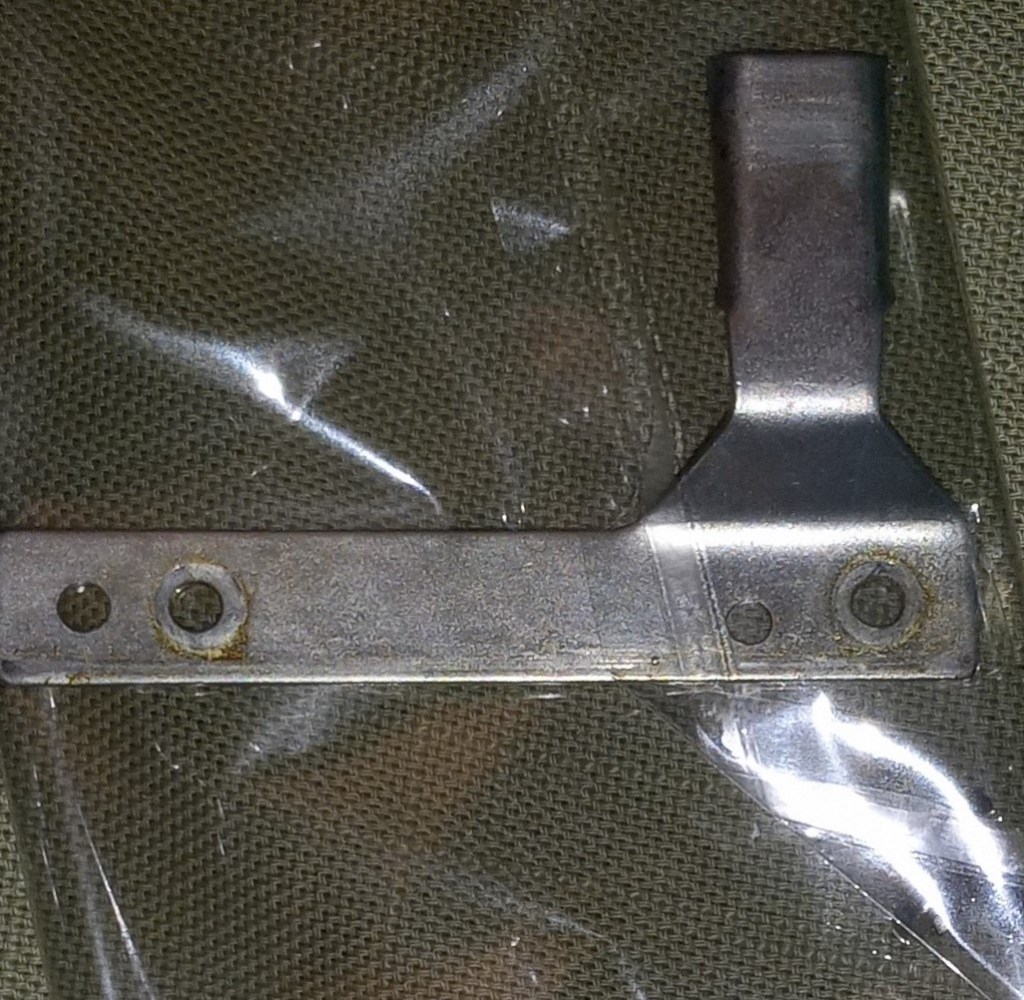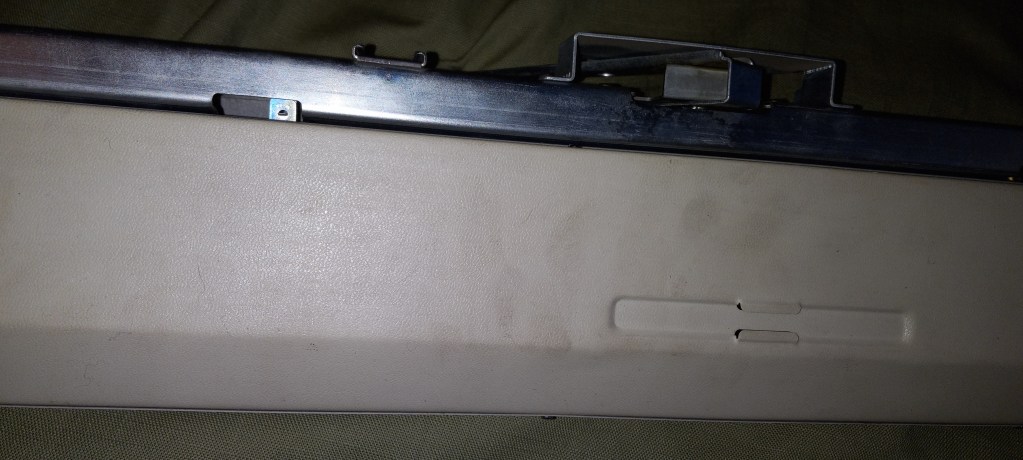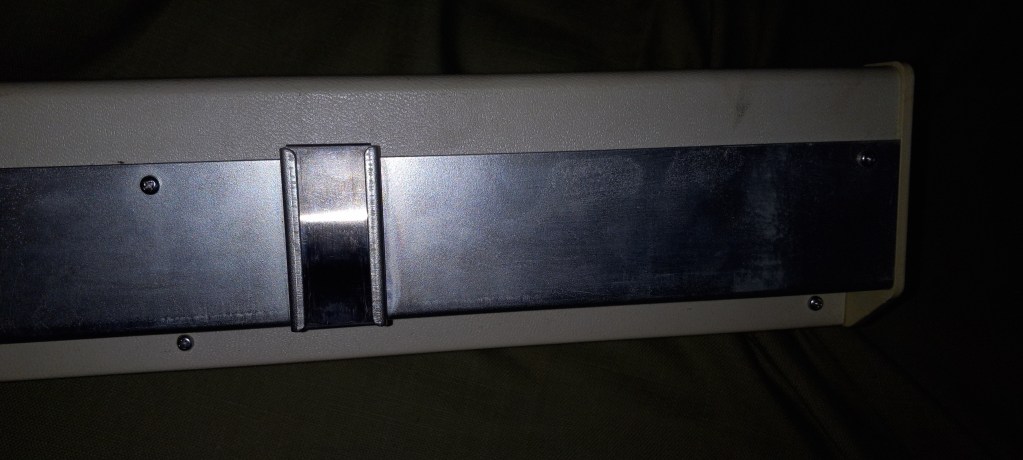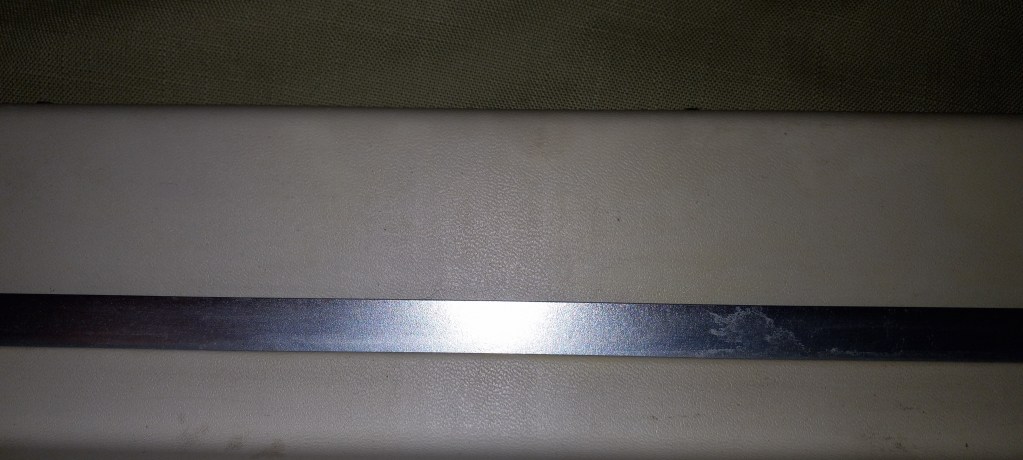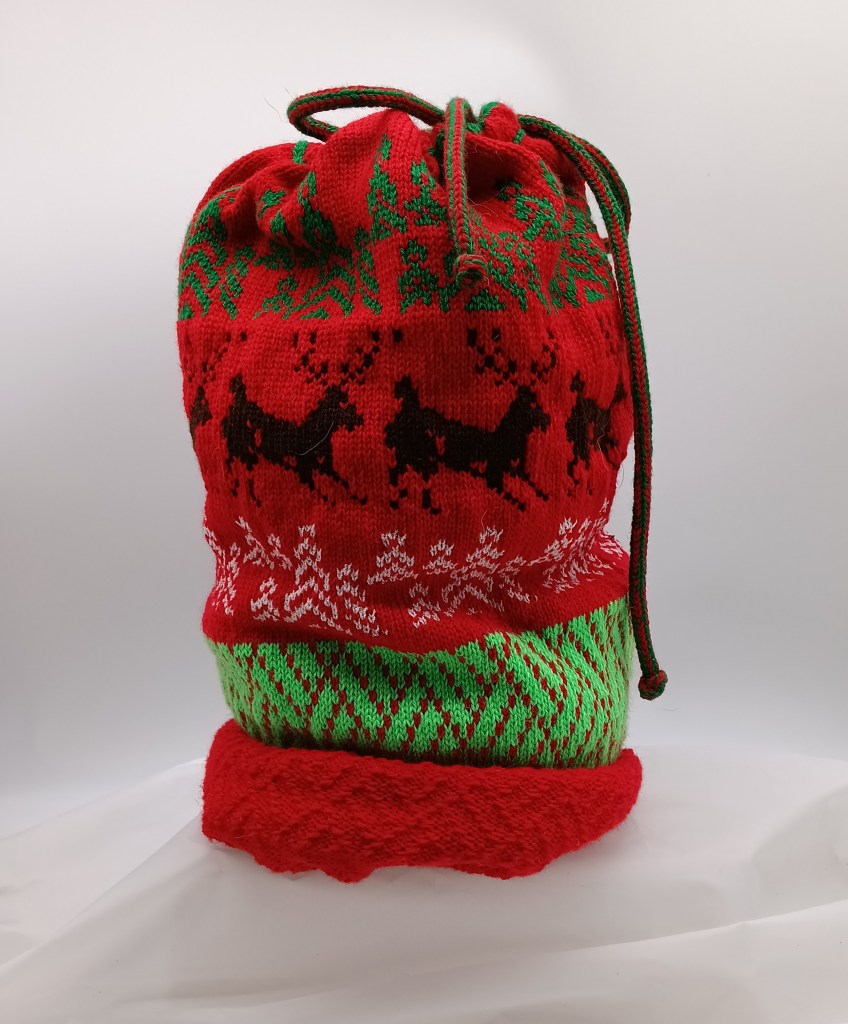Brother KH601 knitting machine was released by Brother in the 1970s. It is a standard-gauge knitting machine with the needle selection performed by the pattern center and the 8-push buttons. Read more on pros and cons of this model in my Knitting Machine Encyclopedia.
The machine discussed in this blog was refurbished by me in May 2024. I lenjoyed working with this model and learning its mechanisms.

The machine comes with all major accessories (lace carriage, cast-on combs, extension rails, tension mast). The standard set includes one long cast-on comb (for the full bed) and one short one. The short one did not come with this machine so I will include a cast-on comb from my stash but its color is slightly different: greenish (while the original is greyish).
Most minor accessories are included as well. The row counter is not the original one (the original emerald-color one was missing – so I included a brand new cream-colored row counter from my stash). A hard copy of the manual will be included as well.


The accessories that are NOT going to be included are: cast-on thread (any strong thin yarn will work) and a bottle with oil (use Gun Oil instead). Laying-in thread feeders are already attached onto the sinker plate. Also, the machine did not come with the 1×1 needle ruler and I think this is such a basic tool that I included one from my personal stash. It is not metal like the original needle selection rulers but does the job.

All minor accessories fit into the toolbox. Unfortunately, the old plastic became fragile and the box has several cracks. It still holds all the tools well and will be included with the machine.

The carriage of KH601 differs a bit from all other 8-pusbutton machines I knitted on (KH5552-KH588-KH710): it has a sliding hold cam lever in the middle of the carriage right under the tension dial instead of two levers on the side.

The writings on the carriage and on the pattern center are in Japanese. But the previous owner left some marks in English – so it will be easy to understand and follow the manual.
The hard copy of the manual that came with this machine shows a slightly different carriage (a more standard for 8-pushbutton machines – with side levers rather than with a slide lever above the buttons on the carriage). There is a one-page insert (provided by the manufacturer, I believe) that shows the setting for this particular carriage.
I recommend using the manual for the KH800 to guide you on the HCL position (the sliding lever above the TUCK, PLAIN, and PART buttons) during patterned knitting.


I thoroughly cleaned the machine, inspected and cleaned all the needles, replaced the sponge in the retaining bar, and cleaned and serviced the carriage (ensured all the levers, knobs, and buttons move freely). I then tested the needles by knitting various patterns on a full bed watch the video of these tests here).
All tests were passed with flying colors! The patterns I tested were the “butterfly” pattern with needles being held and then knitted, a 1×1 tuck pattern (the trickiest to execute out of all tuck-pattern, in my opinion) and a slip-stitch siz-zag pattern. All neeles worked great!

The knitted fabric was then converted into a reversible cowl/neck warmer/hood.



Now about imperfections:
- Buttons #6 and #7 in the pattern center are a bit sluggish when are revered to the unpushed position. But only if they are unpushed by themselves. When pushed and then unpushed together, they are pretty perky. My video shows this flaw at the end but it did not affect the patterning or the knitting of the machine.
- There are some minor scratches, stains and bends on the case and the lid (not shown here but I will document them when I pack the machine).
- Cracked tool storage box. The lid for the storage box is a bit cracked too. (not shown)
- The greenish cover for the tension dial has a small broken nugget that holds it in place. It sometimes gets loose. I did not glue it completely because it needs to be removable in case the carriage requires disassembling. It does not affect the functioning of the carriage or the tension dial.
- The carriage has minor rust and metal discoloration spots. It did not affect the functioning of the carriage.



Overall, this machine behaved very well. With regular oiling and cleaning, it will serve your knitting needs for many years!
This machine as well as other machines with punchcard patterning capabilities can be purchased from my Etsy store, or in my independent shop (for less).
Not sure which machine is right for you? Read how to choose the right machine for your needs. Regardless of the machine you choose, check out easy-for-beginners projects for your first knitting machine. Also, check my website for a blog article on the first steps with your new-to-you knitting machine.
Have questions? Get in touch with me through FaceBook: https://www.facebook.com/MightyKnittyMachines





